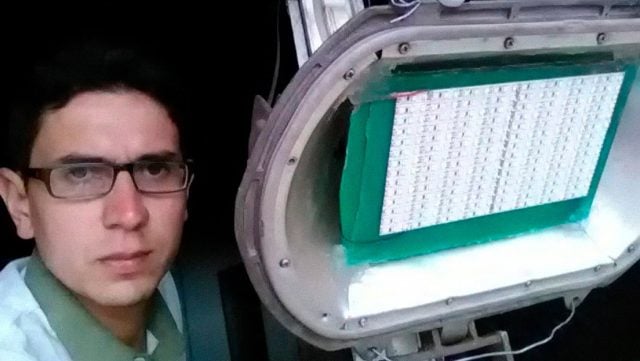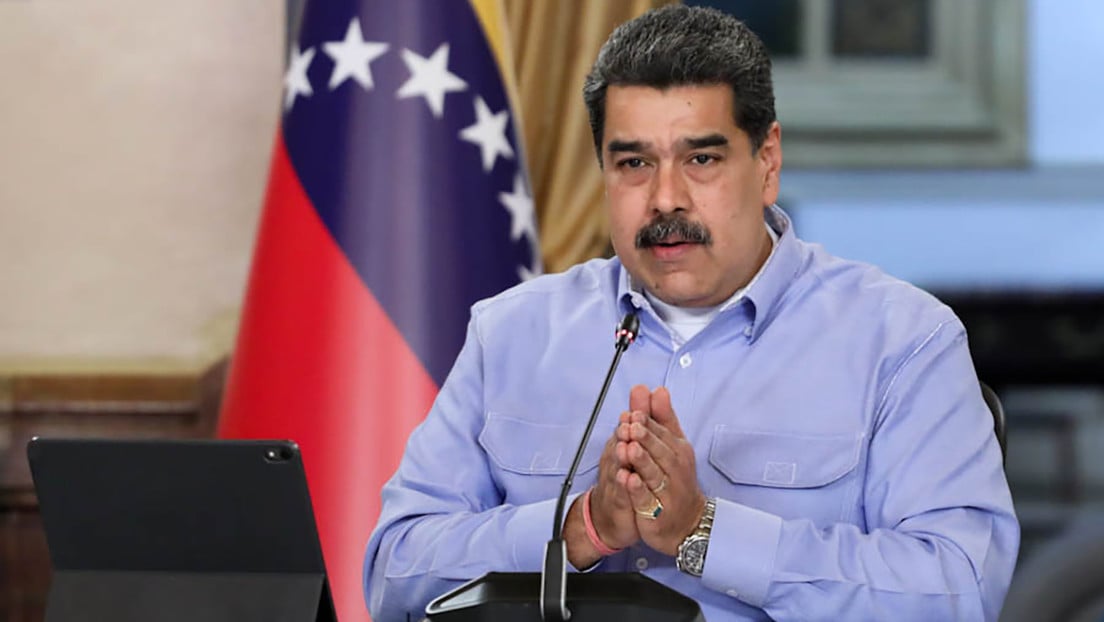Anderson Sandoval is a Venezuelan who, through the study of the circuits of light bulbs with LED technology, has managed to decipher how they work and reverse the programmed obsolescence, a practice that for economic purposes is applied by companies that —intentionally— ‘give a time of expiration’ to their products, regardless of the consequences against consumers and the environment.
In 2016, at the age of 21 and a recent telecommunications engineer graduate, Anderson opened an electronics workshop in the state of Mérida —in the Andean region of Venezuela, located in the west of the country—, to repair LED light bulbs, among other electrical items.
By then, the economic crisis in the country made many people who had previously opted to buy a new appliance when it was damaged —especially during the times of prosperity that the country experienced in the first decade of the 2000s—, begin to repair them.
Among these products were LED light bulbs, known as «energy-saving» light bulbs or «white light», which use less electricity than incandescent yellow light. But when these luminaires were damaged, buying a new one was expensive. Not everyone could pay the cost of «energy-saving» light bulbs, since issues such as food, personal hygiene, among other commitments, were more important in the household budget.
When Anderson began to investigate how his circuits worked in order to repair them, he realized that these luminaires are manufactured so that they are ‘damaged’ in a short time, since they use more power than they should consume, which causes them to generate excess heat that ends up damaging them and turning them into potential electronic waste.
After identifying the problem, he knew that he could provide a solution by producing more efficient light bulbs, with a guarantee for consumers, without planned obsolescence and 100% made in Venezuela.
What are the light bulbs made by this Venezuelan engineer like?
“When we started, we saw that a lot of material could be removed from damaged bulbs. So, we took that ‘recycling material’ and started making new bulbs by hand and on a small scale», Anderson told RT.
To date, this Venezuelan has designed three types of energy-saving light bulbs and a couple of reflectors with LED technology under the Tedas brand (Anderson Sandoval Electronics Workshop). The names of the light bulbs have to do with their similarity to the fruit of the corn plant.
The smallest is the ‘Jojotico’ (small corn, in Venezuelan slang), which consumes 7 watts and has a lighting power of 1,300 lumens, distributed in 84 light points. Then there is the ‘Media Mazorca‘, which integrates 168 light points, consumes 14 watts and projects 2,600 lumens; and the third, the largest of all, is the ‘Mazorca’, with 336 light points, a consumption of 28 watts and a visibility of 5,200 lumens.
“These bulbs are more efficient and economical than commercial LEDs and much more than incandescents. For example, our largest bulb consumes just 28 watts and illuminates the same as a 400-watt incandescent. In addition, when they complete their life cycle they are not discarded, they can be repaired and used again», explains their creator.
The difference in his models is in the electronic circuit, manufacturing and design, because they do not generate excess heat. His models also have a useful life of 33,000 hours and a three-year warranty.
«I managed to improve the consumption of the light bulbs by distributing the number of watts necessary for each LED (a diode formed by a chip that serves as a current semiconductor) and this is achieved by measuring the total voltage of the circuit. In this way I was able to ensure that consumption was not exceeded, which is what causes them to overheat and become damaged”.
In which type of spaces can they be used and how much do they cost?
Tedas bulbs are used for all types of spaces, from the home space to open and closed places that require great lighting. For example, the jojoticos, can be used in the rooms of the houses and they illuminate with total clarity, while the medium one can be used for a large room and even for public lighting in urban areas, parking lots and small streets.
The larger bulbs – Sandoval details – can also be used for public lighting and spaces that require more lighting such as sheds, industrial areas and open spaces. In addition, he indicates that in his workshop they manufacture these lights for two types of currents: 110 volts, the most used in homes; and 220 volts, which mostly supplies public lighting.
«We have the three models in 110 volts and for 220 volts the two largest models. In the 110, we sell the smallest for 5 dollars, the medium for 10 and the large for 15. For 220, the medium costs 10 dollars and the large 15. The reflectors are also sold at those prices», detailed Sandoval.
Anderson comments that the models of large bulbs as well as the reflectors are working in the urbanization where he lives, after agreeing with the Community Council of the area the installation of his luminaires in public lighting, a process that has an advance of 30% because the replacement of light bulbs requires the accompaniment of the State electricity company.
“With the street lighting poles we use the same structure and adapt the nozzles to our reflectors and light bulbs. This becomes a saving for the State, because we lower costs, since a new lamp for this service costs between 35 and 70 dollars, while ours costs 15 dollars″.
Large scale manufacturing
At the moment, the light bulbs that Anderson began selling in September 2021 are produced on a small scale and – as he says – in an «artisanal» way. However, he believes that his project could generate a positive impact if they were to be manufactured on a large scale, because in addition to offering significant energy savings to the country, it would take better care of the environment, with a product that is not thrown away.
“I would like to be able to show this project to public institutions and get support from the private sector, so as to make an alliance to take production to a larger scale. With the designs we have, the idea is not to make a ‘maquila’ with imported materials and just assemble, but rather that the entire process from design to manufacturing is done by Venezuelan minds and hands», says Anderson.
Currently, Tedas produces an estimated 40 bulbs per month and has received a couple of loans from the Mérida State Corporation (CorpoMérida) and the Venezuelan Bicentennial Bank of the People (Banco Bicentenario), resources that were used to develop and market its products. “Until now, we have worked on manufacturing in an artisanal way, so to speak, following the steps to move towards a more industrial production, a small industry, but for that we continue to seek financing”.
Among the difficulties that he has had to face is the incredulity of some people, who consider that only foreign products are of better quality. However – he says – when people see his lights working, they change their minds.
«I am totally sure of what I do, that’s why I offer a three-year guarantee. Many people told me not to give that guarantee, but that is part of the message that we send to people they trust us, it is the most correct way to validate that the product has quality and is something that can be measured».
Anderson warns that the country should not depend only on assemblers that work with foreign technology and imported products, but should move towards 100% Venezuelan manufacturing, with better quality and sovereignty. For that, he adds, the country must increase scientific development in physics and chemistry, so that chips, LED strips and other electronic components that are currently designed almost exclusively in China can be made in Venezuela.
Projects in development by the Venezuelan engineer
In addition to the manufacture of light bulbs and reflectors, this Venezuelan is carrying out several projects: one aimed at designing flashlights without planned obsolescence, with longer-lasting batteries, high-quality components and great lighting.
“We also have an electric bicycle in the development phase that would work with 12-volt lithium batteries and a motor similar to that of a motorcycle. Until now, it is in the process of investigating the electrical parts and the components that it must have so as to identify how the installation would be done», he explains.
This bicycle, he adds, in addition to changing the transport model that depends only on the pedal, aspires to be cheaper than those on the market, which in different cases exceed 1,000 dollars per unit.
“The idea is that it should not be very expensive, because we see that products that do not depend on gasoline are more expensive. For example, electric bicycles cost more than a motorcycle or even more than a used car. I think they have an exaggerated price, that’s why I want this bicycle to have an affordable price».




